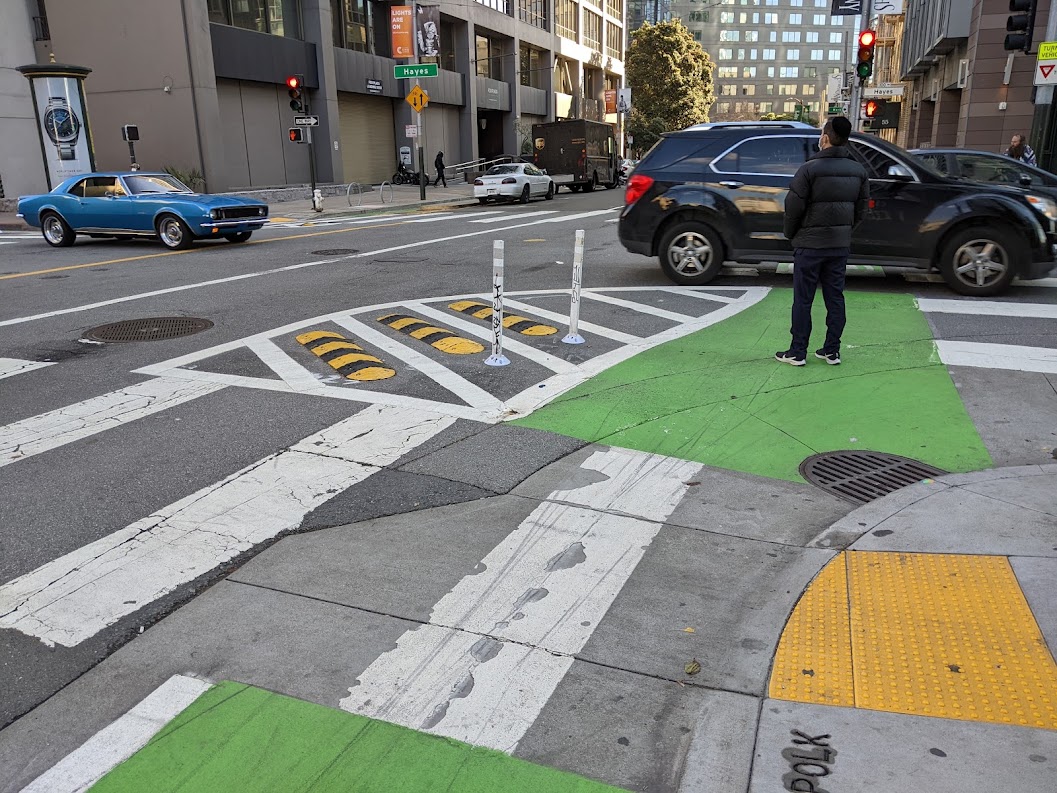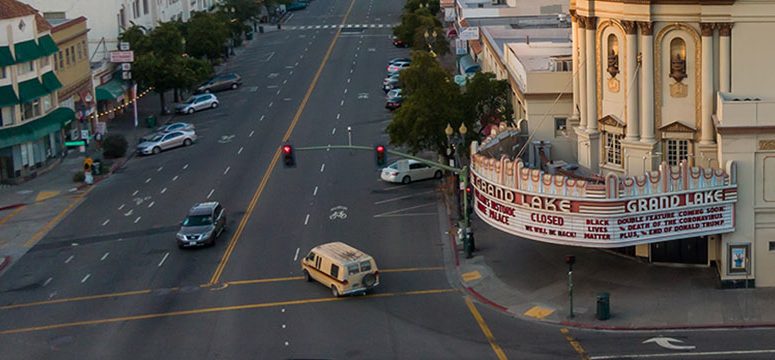Note: GJEL Accident Attorneys regularly sponsors coverage on Streetsblog San Francisco and Streetsblog California. Unless noted in the story, GJEL Accident Attorneys is not consulted for the content or editorial direction of the sponsored content.
A pedestrian, 33, became the first to die in 2022 in San Francisco when a motorist struck him last week on Geary. As Walk San Francisco stated in its condolences, 27 people were killed in traffic crashes in 2021; 13 of them pedestrians. For years now, those numbers have barely moved, despite the SFMTA's many safety projects.
A clue as to why can be seen a mile away on Polk near City Hall, where Streetsblog stopped to see the latest incarnation of an ongoing safety project this past weekend. It was built in response to the death of Lovisa Svallingson, one of those statistics from last year. In May a driver used the street's previously paint-only, unprotected bike lane to go around a stopped line of cars and run a red light, killing her in the crosswalk.
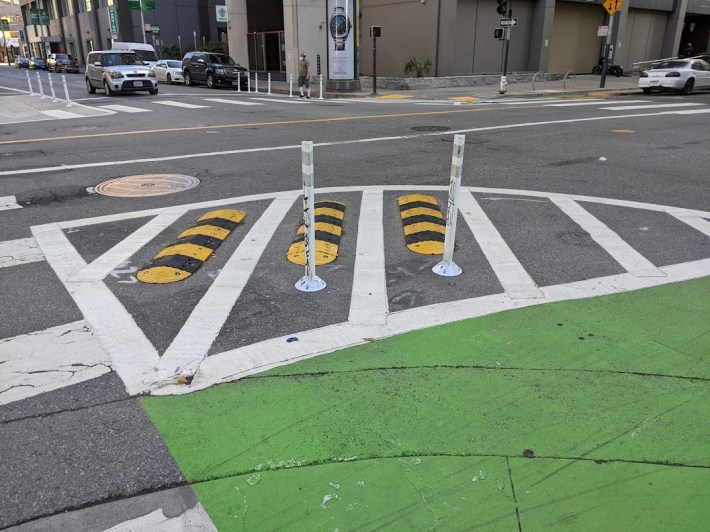
In the case of Polk, there was a safety project almost a decade ago that was supposed to put protected and parking-protected bike lanes on both sides of the street, which would have made the driver's maneuver impossible. About the only part of the project that fully survived all the compromises and political pushback is a two-block, contra-flow section right across from where Svallingson was killed. It's protected by concrete, boulders, a steel railing, and a planting strip.
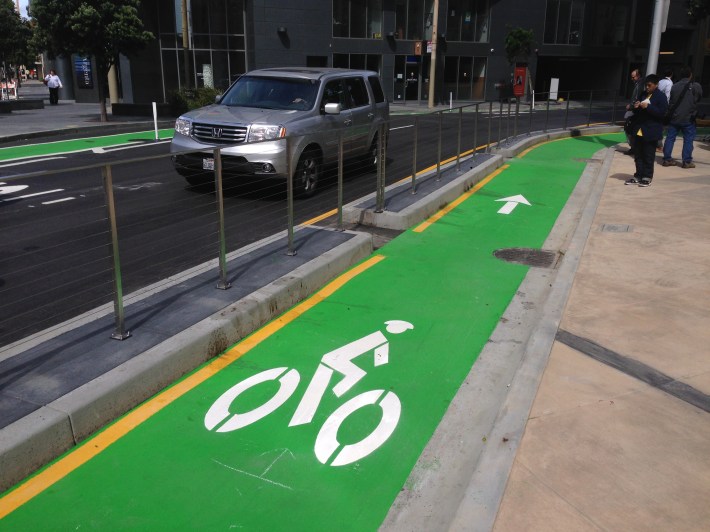
But, as previously reported, a compromise was reached to preserve parking on the west side of this block, so protection was built on only one side. That's what SFMTA fixed. And to point out the obvious from the photo below, even the "fix," while much better, wouldn't have stopped the motorist and his Chevy Avalanche.
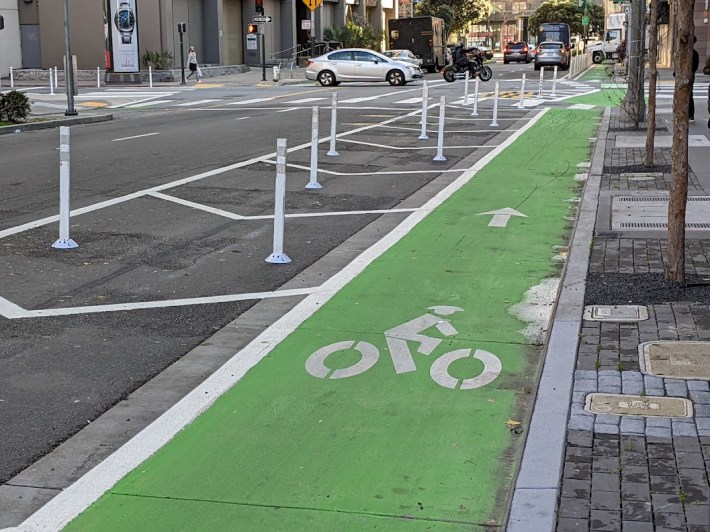
That's because instead of concrete and metal, this time they're using more paint and plastic posts.
Streetsblog reached out to SFMTA's Jaime Parks, who oversaw the new design, and asked why. "The timeline to construct concrete islands would have added several months to the project schedule. Second, the experience with the paint and posts-protected corner will help us refine the geometry of any concrete design (e.g., turning radii, lateral off-sets, etc.) so that it works as well as possible. We expect that concrete islands will be installed at Polk/Hayes in 2022."
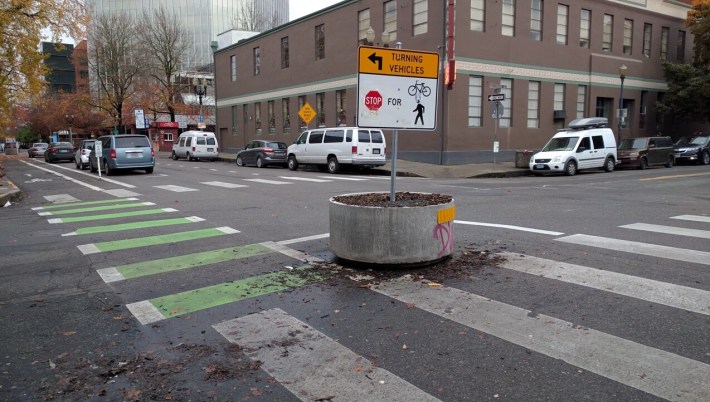
Streetsblog is happy concrete is coming. But in the meantime, all cities have emergency plastic barriers, common at construction sites, that can be filled with gravel or water to weigh them down. They could buy concrete planters, such as seen above in Portland. Emeryville used old repurposed concrete garbage cans interspersed with concrete-colored plastic posts on Doyle to keep cars off the bike lane as part of a quick-build project. Some cities use concrete Jersey barriers.
In other words, "interim" materials don't have to be just plastic posts.
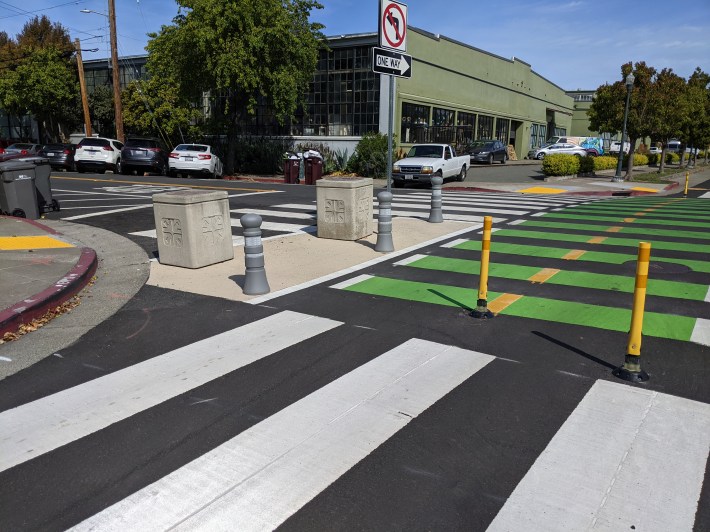
As to the turning radius, there are guides from the Netherlands and the U.S. that already cover this. And San Jose has protected intersections all over its downtown with double-turning radii that take large vehicle requirements into account.
Reacting to deaths one block at a time with more plastic and "geometry refining" trials can't be the answer. SFTMA needs to add whatever chonky concrete objects or water barrels they can find to wherever they currently have plastic posts. And then forget about replacing it with concrete curbs. Move on to the next block. And then the next.
Worry about making it perfect and pretty when the city has three deaths a year, not 30.
